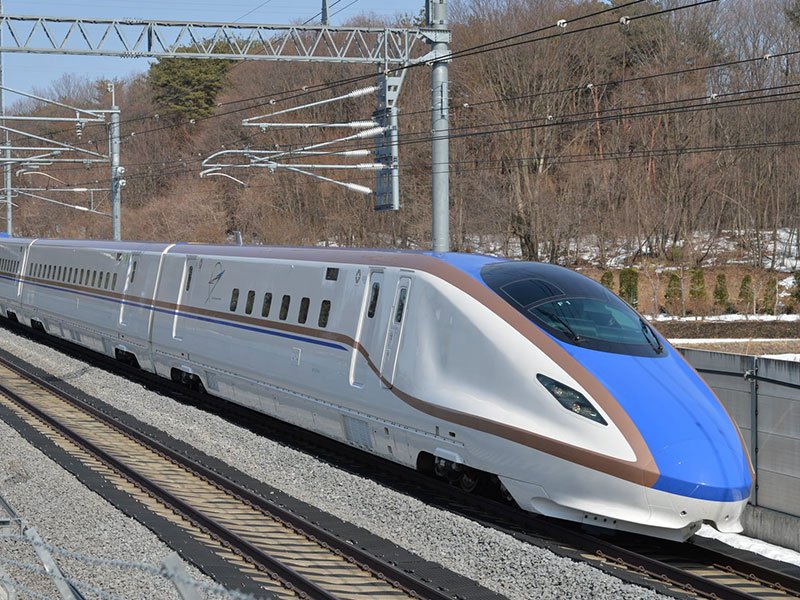
It is been a year since the COVID-19 emerged. Travel is still greatly been constrained in many countries, but even under such circumstances, public transportation, including trains, have been able to continue its operation as an essential urban function. High-speed rail (HSR) is no exception, and it has continued to fulfill its mission as a key element of infrastructure by implementing essential safety measures as effectively as possible. Not only that, HSR operators are actively working to introduce new technologies.
In November 2020, East Japan Railway Company (JR-East) announced plans to test Automatic Train Operation (ATO) on Shinkansen E7 series. The trial will take place in October and November 2021 (plan) using out-of-service train on the 5km between "Niigata Station" and "Niigata Shinkansen Rolling Stock Center" in order to accumulate and verify the technology necessary for the realization of ATO for Shinkansen. JR-East advocates the realization of driverless operation in its group management vision "Transformation 2027" and has been promoting the development of ATO. By accumulating the knowledge obtained in this trial, the development of ATO aiming at automatic operation of Shinkansen will be advanced.
The ATO trials will consist of the following features:
- Remote departure
- Tests of the ATO system to automatically accelerate and decelerate the train
- Automatic stopping in a pre-determined location
- Emergency stop procedures
The "driverless operation " has already been carried out on the conventional lines in Japan, starting with the Osaka Metro New Tram and Kobe's Port Liner which opened in 1981. Similar technologies are being adopted in other countries, such as the North-South MRT line in Singapore, Dubai Metro in UAE, etc. However, currently driverless operation cannot be introduced on all lines. This is because there are many hurdles to be cleared for its introduction, especially, preparing the environment where people cannot interfere with tracks (e.g. no level crossing, operation in underground or elevated tracks, installation of platform doors, etc.). In order to solve these issues, railway operators in each country are conducting many trials.
ATO has not yet been introduced in any high-speed rail. Why? There are many possible reasons, but as for Shinkansen, for example, safety, frequency, accuracy of an average delay time of less than 1 minute, and comfortable space where even coffee placed in a vehicle does not spill are its strengths. These strengths are realized by the skill and experience of train drivers, and should not be compromised by the introduction of ATO. The realization of ATO will be dependent on whether ATO can achieve the same level of safety, frequency, accuracy, and comfort that has been maintained by the skill and experience of the train drivers.
Nevertheless, for Japan, which faces major challenges in securing a future workforce due to population decline, it is extremely important to introduce new technologies and overcome various challenges. The Superconducting Maglev (SC Maglev) which is currently being developed in Japan, for example, is a big project that connects Tokyo and Osaka in about an hour and forms a huge economic zone with the three major metropolitan areas united. As for this project, driverless technology is to be adopted. If you want to know further information regarding SC Maglev, check the following website:
More than 50 years have passed since the Shinkansen debuted as the world's first high-speed rail. From its opening to the present, Shinkansen has made remarkable progress in many aspects.
New technologies such as ATO will be developed and introduced in the future. There is no end to the progress of railways.